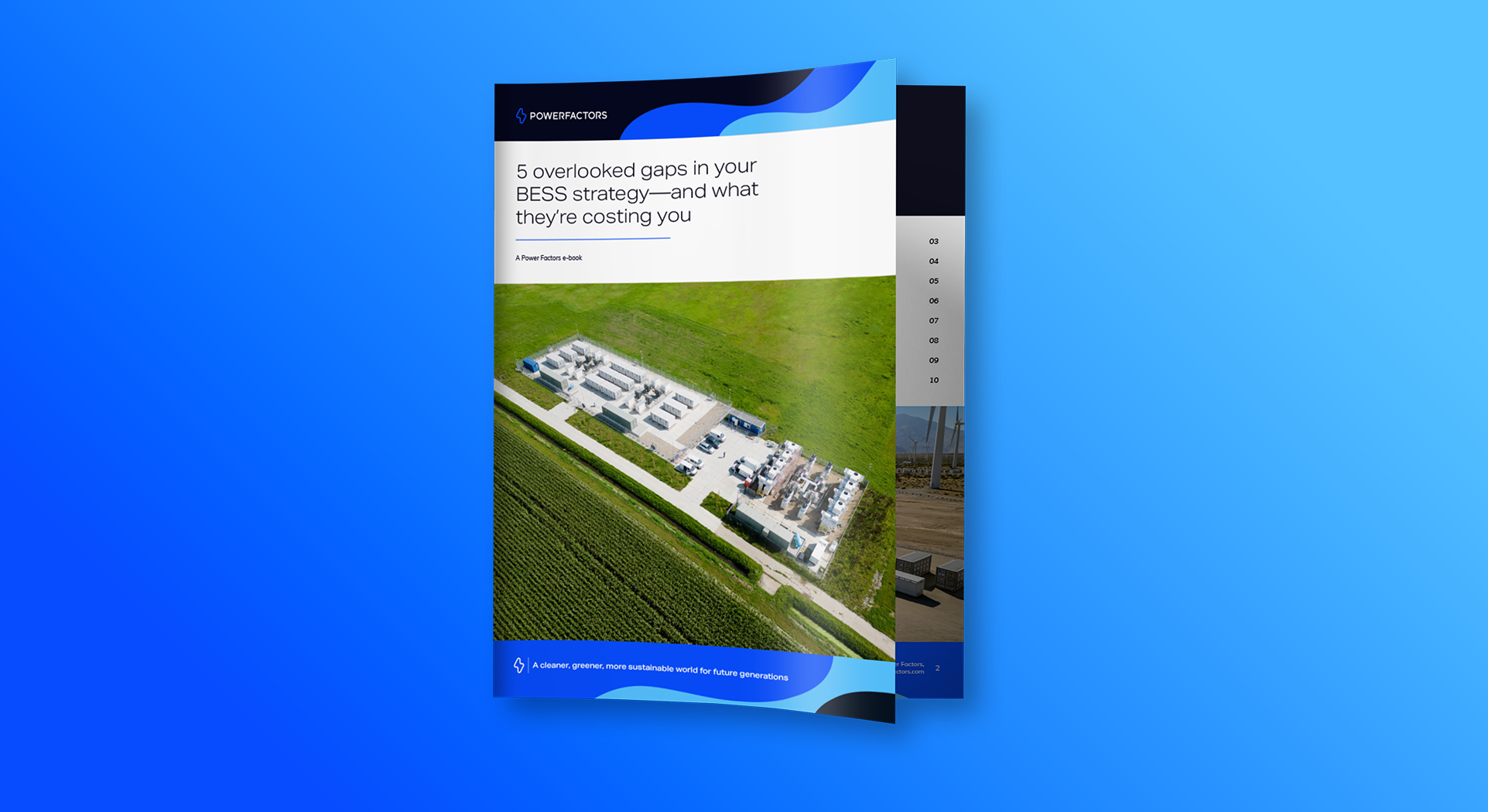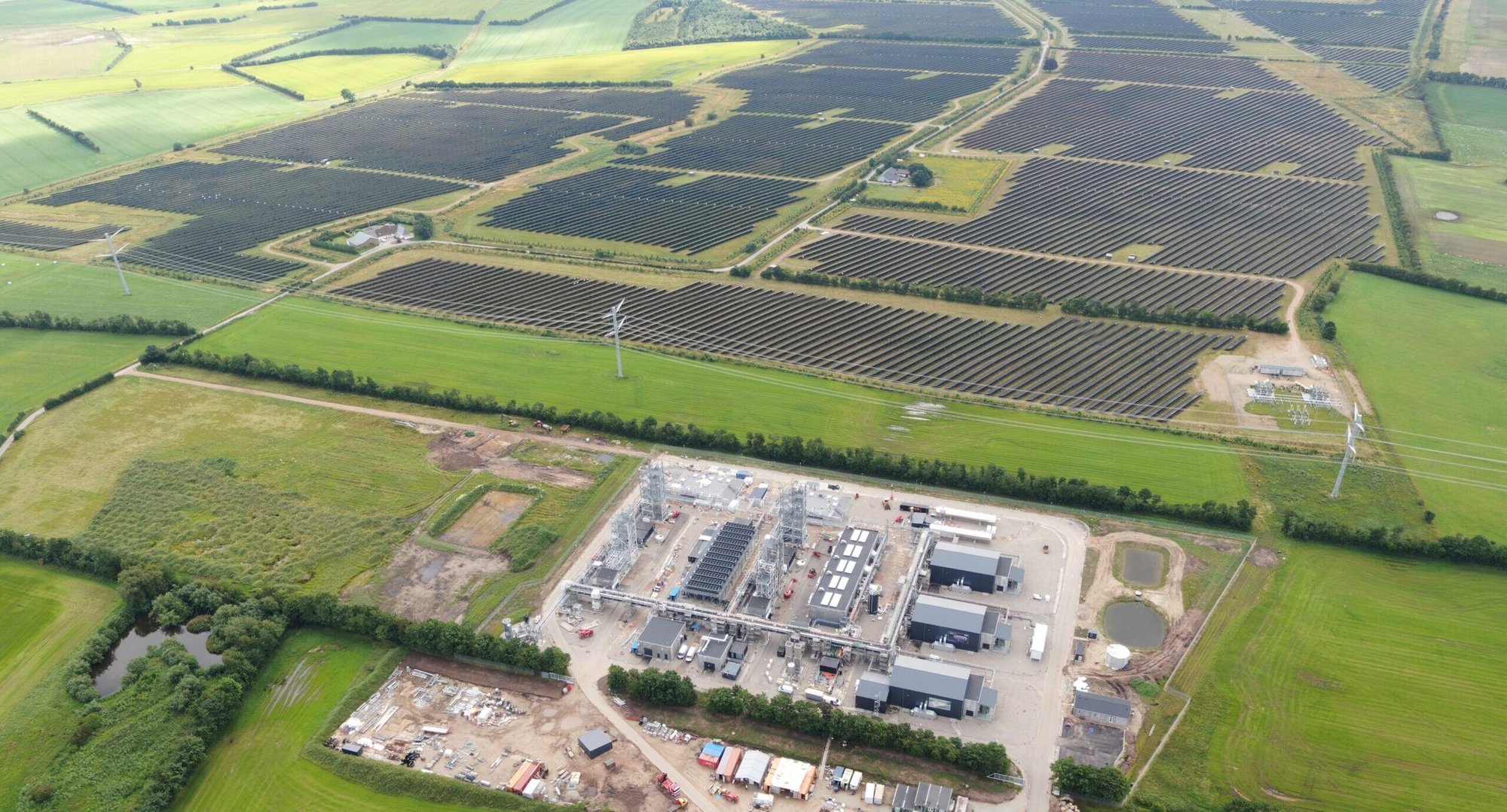[ARTICLE 1] WHY YOU NEED AN INTEGRATED APM PLATFORM
Operators have plenty of challenges operating an energy storage system as a stand-alone asset – when combined with solar and wind assets, the operational and economic tradeoffs multiply.

Stay in touch
Subscribe to our newsletter for expert insights, company updates, and the latest in renewable energy management solutions.
This is the first article in a four-part series about the unique O&M challenges of the energy storage asset class and the reasons why owners and operators of mixed portfolios of solar, wind and energy storage assets need an integrated asset performance management platform.
As energy storage becomes increasingly commercially viable, we’re going to see more and more storage deployed with solar and wind energy projects as part of a hybrid energy system.
And, because of the unique and complex operations and maintenance requirements we discussed in my last article series, energy storage assets must be managed carefully to maximize project ROI and reduce the risk of safety hazards and shortened economic lifetime. This creates plenty of challenges when it comes to operating an energy storage system as a stand-alone asset — and the operational and economic tradeoffs multiply when energy storage is combined with solar and wind assets.
This article series will discuss the unique O&M challenges of the energy storage asset class and provide a rationale for why owners and operators of mixed portfolios of solar, wind and energy storage assets need an integrated asset performance management platform (APM) to maximize the portfolio profitability.
DEFINING OUR TERMS
Before we make the case for an integrated APM software platform, let’s first define our terms. What is an APM? EAM? What about CAM and CMMS? Can they work together, creating a whole that is greater than the sum of its parts?
ASSET PERFORMANCE MANAGEMENT (APM)
Gartner defines an APM as a software platform that “encompasses the capabilities of data capture, integration, visualization and analytics tied together for the explicit purpose of improving the reliability and availability of physical assets.” An APM is all about monitoring and optimizing the physical performance of an asset.
COMPUTERIZED MAINTENANCE MANAGEMENT SYSTEM (CMMS)
Wikipedia defines a computerized maintenance management system (CMMS) as “a software package that maintains a computer database of information about an organization’s maintenance operations to facilitate the processes of maintenance operations.” A CMMS is the software tool that assigns corrective and preventive maintenance work orders to field service workers to manage maintenance, restoration and repair of physical assets.
ENTERPRISE ASSET MANAGEMENT (EAM)
Gartner defines enterprise asset management (EAM) as an “asset register, work order management, inventory and procurement functions in an integrated business software package.” In other words, an enterprise asset management (EAM) system layers inventory management, procurement, and compliance management capabilities on top of a CMMS with centralized visibility of all assets in the portfolio.
COMMERCIAL ASSET MANAGEMENT (CAM)
A commercial asset management (CAM) system completes the financial asset management functions of the EAM by adding financial compliance, insurance, cash management, financial reporting and energy billing to the mix.
INTEGRATED APM
Therefore, an integrated APM platform is a software platform that combines the monitoring, performance management, asset management, field service management and commercial asset management functions of renewable plant management into one cohesive and unified solution and user experience.
The next four articles in this series will focus primarily on how the maintenance management and asset performance monitoring functions should be integrated as well as on the benefits of adopting an integrated APM for renewable energy asset owners and operators with a portfolio of mixed asset classes.
THE CASE FOR AN INTEGRATED APM
Combining the field service and asset management functions of operating renewable power assets makes good economic sense if you own and operate solar and wind assets as standalone projects. There are many benefits to removing the information silos between the operations, maintenance and commercial asset management sides of the business.

For example, if you have multiple simultaneous equipment outage events and limited availability of the people, parts, tools and equipment needed to return that equipment to service, how do you make the best business decision about how to deploy these scarce resources?
If you don’t have real-time visibility into the status of all the field work that needs to be performed and the resources and associated costs needed to perform that work, you are – at best – making an educated guess about where to roll the next truck.
Equipment outages and underperformance actively erode project revenue. The best way to make mission critical business decisions about where to allocate limited labor and parts is to have up-to-date visibility into all the costs and all the revenue recovery opportunities available.
UPPING THE ANTE – INTEGRATED APM FOR HYBRID PROJECTS
If the above holds true for standalone solar and wind projects, you can see how adding energy storage and hybrid projects to the mix really ups the ante.
Energy storage assets introduce next-level complexity to solar and wind portfolios. Why? Because storage introduces opportunities for energy arbitrage into the buy/sell equation of the plant and portfolio. Since we can’t know future energy prices with certainty, the forecasted operating duty of the storage system can’t be known with certainty either.
As a result, the real cost of the historical cycling of the system needs to be continually understood relative to forward power prices in the market. But how to calculate the actual cost of storage system cycling?
Without an integrated APM platform, you can’t know the true cost of storage with any consistent accuracy because operational performance data needs to be continually compared to maintenance cost data. Until this data is fully integrated, owners won’t have a real understanding of the cost of cycling and the useful life of the asset.
Drive O&M and Drive APM work together to empower teams with a condition-based maintenance solution that’s purpose-built for renewables.
Interested in learning more? Get the Drive O&M brochure.
FOUR KEY DATA TYPES

An asset performance management platform must have full visibility into the operating performance of the hybrid assets and how that performance correlates to actual maintenance costs and capacity degradation of the system. An integrated APM platform solves this problem, providing the information owners need to run dispatch schedule “what-if” analyses to optimize portfolio profitability.
To evaluate the complex tradeoff of hybrid system cycling and maintenance costs, an APM needs to collect and manage at least the following four key data types:
- Current and future market prices
- Component and system operating costs
- Component and system estimated useful life
- Component and system current operating state and performance
As you consider the types of data needed to solve the optimal dispatch and maintenance equation of running a multi-asset renewable portfolio, it becomes clear that one system can’t be the source for all these data requirements.
An APM platform must integrate data from the real-time market, maintenance and operations platform, performance monitoring system and commercial asset management system to be able to provide operators and asset managers with the complete revenue and cost picture they need to manage the portfolio profitably.
In the next few articles, we will discuss how and where this data comes from and the power of data integration for evaluating the economic tradeoffs that are made every day in large portfolios of solar, wind and energy storage assets.
Now retired, Steve Hanawalt co-founded Power Factors in 2013 and spent almost 40 years in the energy industry. For more renewables industry content, follow Power Factors on LinkedIn and Twitter.



![[Article 7] How to Select the Right Software Solution for BESS Asset Management](https://www.powerfactors.com/hubfs/solar-energy-panels-clean-energy-background-WKY4FJ5.jpeg)
![[Article 5] What Asset Managers Need to Know About BESS Economics](https://www.powerfactors.com/hubfs/solar-panels-background-KFQB89V.jpg)
![[Article 6] Financial and Technical Information Asset Managers Need to Manage Storage Assets](https://www.powerfactors.com/hubfs/solar-panel-AM6H9DS.jpg)